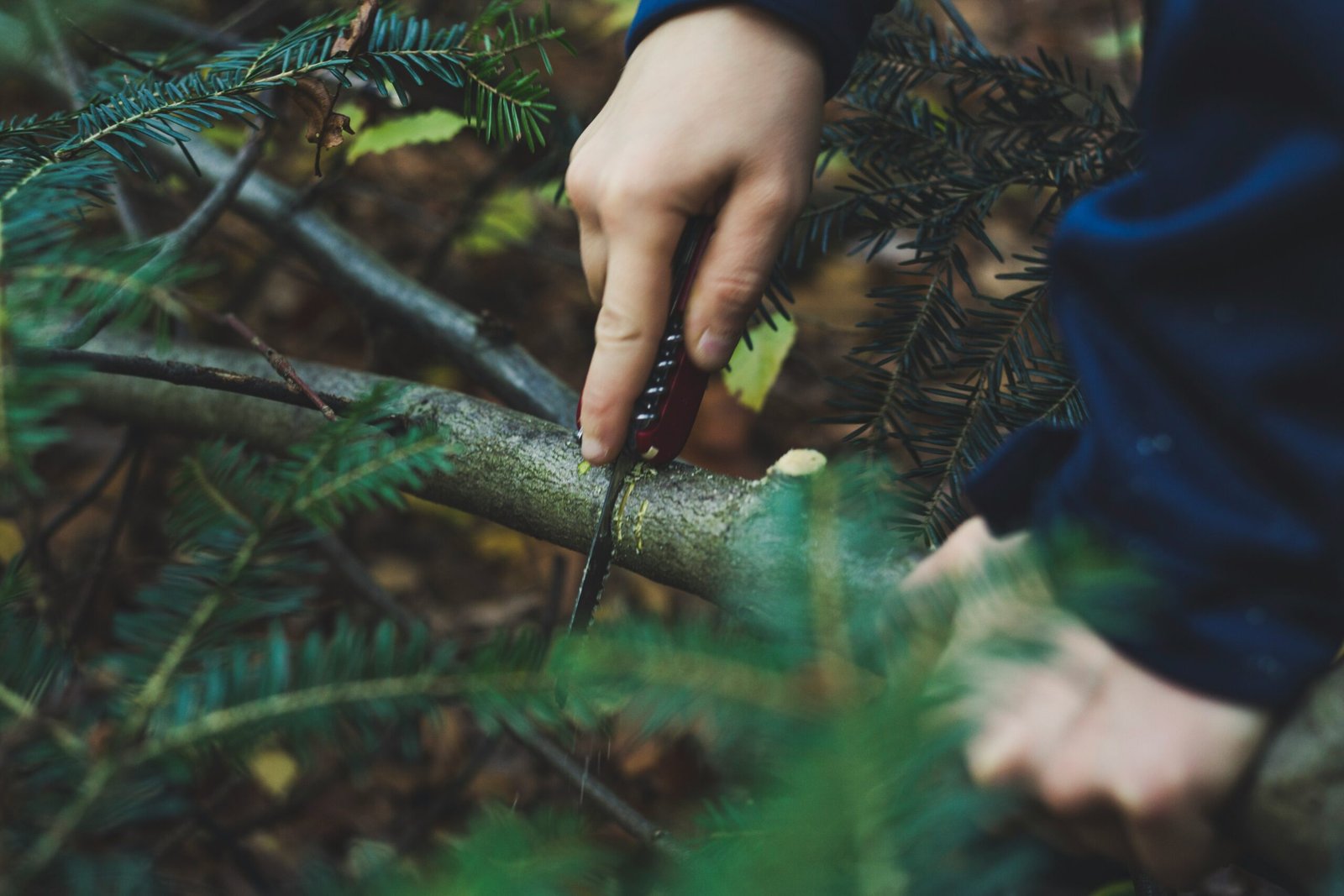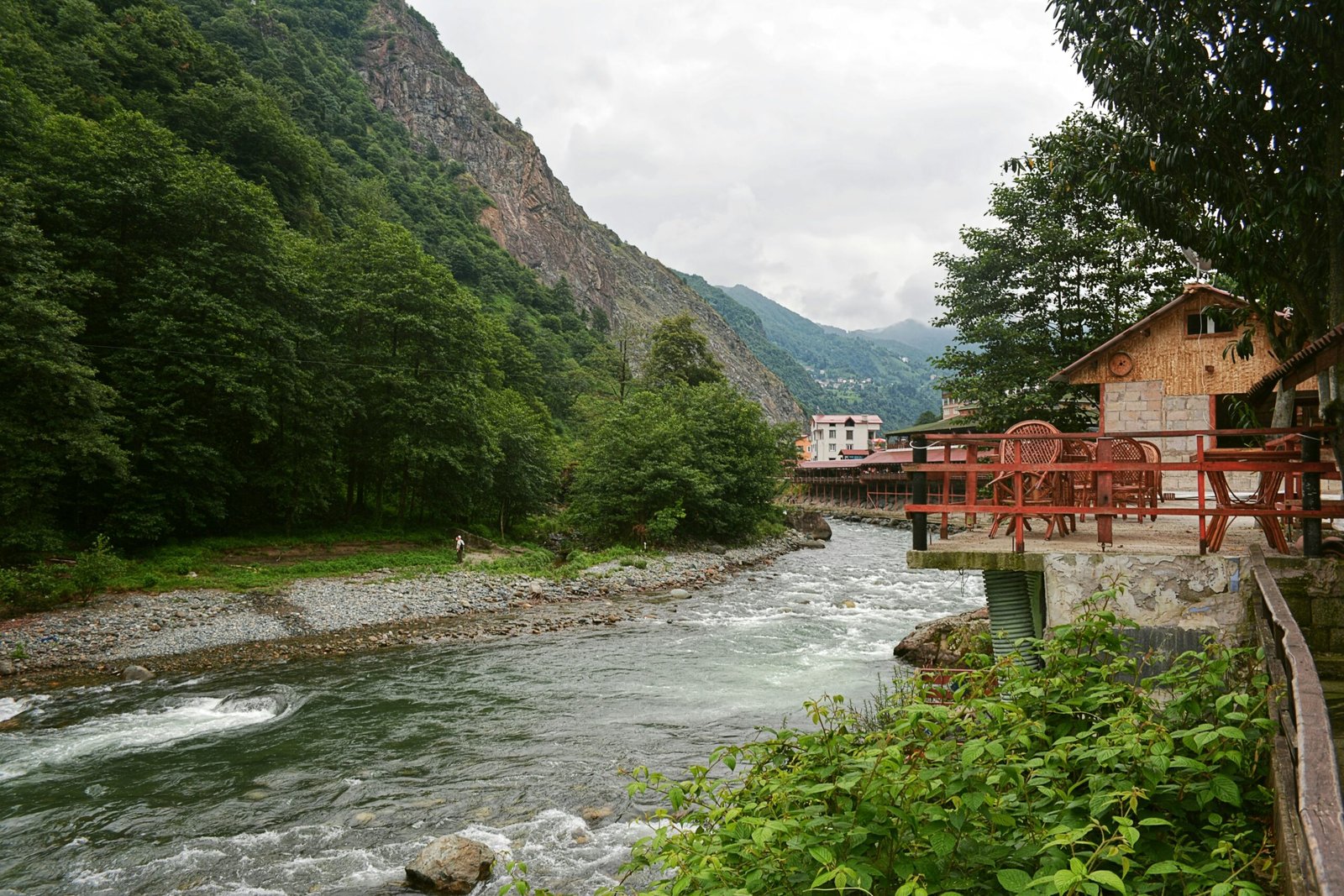
Introduction to Survival Skills
Survival skills refer to a set of techniques and knowledge that individuals can employ to navigate and endure challenging situations, particularly those that threaten their safety, health, and well-being. These skills are essential in various contexts, including outdoor adventures, emergencies, and natural disasters. Being equipped with survival skills can significantly enhance an individual’s ability to respond effectively when faced with unforeseen challenges.
In outdoor settings, such as camping or hiking, the unpredictability of nature can create potential hazards, including extreme weather, lost trails, or wildlife encounters. Knowledge of survival skills, such as map reading, fire starting, and finding potable water, becomes crucial in these scenarios. These competencies not only support individual safety but also encourage self-reliance and confidence when venturing into the wilderness.
In addition to outdoor adventures, survival skills are crucial in emergency situations that can occur unexpectedly in urban environments. Natural disasters, including earthquakes, floods, or severe storms, can disrupt daily life, leading to power outages, limited access to supplies, and difficult communication. Understanding basic emergency protocols, first aid, and resourcefulness can mean the difference between life and death in critical moments.
Moreover, the increasing frequency of natural disasters due to climate change highlights the pressing need for preparedness. Individuals must be aware of how to create emergency plans, build survival kits, and engage in community preparedness initiatives. This knowledge not only equips individuals with the means to protect themselves and their families during emergencies but also fosters a culture of resilience.
Thus, acquiring survival skills is not merely an optional luxury; it is an essential component of personal security in an unpredictable world. These skills save lives and promote a proactive approach to safety, encouraging individuals to prepare for potential crises before they arise.
Finding and Purifying Water
Water is a vital resource for survival, and knowing how to locate it in the wild is an essential skill. Regardless of the environment—whether it be a forest, desert, or mountainous area—recognizing indicators of water sources can significantly enhance your chances of survival. Look for natural signs such as wildlife trails leading downhill or to dense vegetation, both of which often indicate proximity to water. Additionally, in arid regions, signs of moisture such as damp soil or the presence of certain plant species, like willows and cottonwoods, can be reliable indicators of nearby sources.
Once a water source is located, the next critical step is ensuring its safety for consumption. Natural water sources may harbor contaminants, including bacteria, parasites, and pollutants, which can pose serious health risks. Therefore, purifying the water before drinking is indispensable. One of the simplest methods is to boil the water for a minimum of one minute, which effectively eliminates harmful microorganisms. High altitudes may require an extension of this time for efficiency.
Another method of water purification is the use of filtration systems. Portable water filters designed for outdoor use are compact and can remove pathogens and larger particulates. For longer-term strategies, creating a DIY filter using sand, charcoal, and gravel can also improve water quality, although it may not eradicate all contaminants.
Chemical purification is another viable option, with tablets containing chlorine or iodine available in many outdoor gear kits. While this method is effective for many contaminants, proper dosage and waiting periods are essential to ensure safety. Understanding these techniques for finding and purifying water is critical for anyone venturing into wilderness, providing the foundation needed for maintaining hydration and overall health in survival situations.
Building a Shelter
Building a shelter is a fundamental survival skill that serves as a protective barrier against the elements, whether you are in a forest, desert, or mountainous region. The first step in constructing a suitable shelter is to identify the environment in which you find yourself. Different situations call for different types of shelters. For example, a lean-to made from branches and leaves can provide a quick refuge in a woodland area, while a snow cave might be necessary in a snowy climate. Understanding the resources available in your environment is key to determining the best option.
When selecting materials for your shelter, natural elements such as sticks, leaves, grass, and even rocks are typically utilized. These materials should be readily available and capable of providing insulation to protect against cold temperatures. Insulation is crucial; it helps maintain warmth by minimizing heat loss. Choosing materials that trap air, like dry leaves, can enhance insulation, thus improving comfort within your shelter.
Location is also pivotal in the process of building a shelter. It is advisable to select a site that is level, away from potential hazards such as falling branches, flooding zones, or strong winds. Consideration of the sun’s path can help in optimizing natural light and warmth in colder climates. Additionally, ensuring proper ventilation is essential for maintaining a breathable environment within the shelter. Ventilation prevents the buildup of condensation and allows smoke from fires (if applicable) to escape, creating a more comfortable atmosphere.
In essence, constructing an effective shelter requires a balance of materials, location, insulation, and ventilation. These elements combine to create a strong defense against adverse weather conditions, ultimately enhancing your chances of thriving in the wilderness.
Starting a Fire Safely
Starting a fire is an essential survival skill that can provide warmth, light, and a means to cook food or purify water. Understanding how to efficiently and safely build a fire is critical, especially in outdoor environments where resources may be limited. There are various methods to start a fire, including using natural materials and man-made tools, that cater to different circumstances and available resources.
One common method of fire-starting involves using friction, such as the hand-drill or bow-drill technique. Both of these methods rely on the mechanical creation of heat through the friction between two pieces of wood. For individuals lacking experience, the bow-drill method is often recommended as it allows for better control and requires less physical effort. Kinds of wood suitable for the spindle and hearth include softwoods like cedar and pine, which can produce an ember when treated carefully.
Another effective way to ignite a fire is by using spark-based methods, such as flint and steel or a ferrocerium rod. These tools can produce a spark that ignites tinder, which is any small, easily ignitable material that can catch a spark. Selecting the right tinder is crucial; natural options include dry leaves, grass, or bark. When utilizing man-made tools, ensure you have a backup plan in case your primary tool fails.
While learning to create fire is imperative, fire safety should not be overlooked. Always build a fire in a clear, established fire ring to minimize the risk of an uncontrolled blaze. It is essential to keep water or dirt nearby to extinguish the fire completely when finished. To manage a fire safely, avoid using flammable liquids and never leave it unattended. By mastering the techniques of building and managing a fire safely, individuals can enhance their outdoor survival skills significantly.
Finding Food in the Wild
When faced with an emergency situation in the wilderness, the ability to find food is a critical survival skill. Foraging for edible plants, insects, and small animals can provide sustenance until a more permanent source of food is secured. Understanding the local ecosystem is essential, as it allows individuals to identify safe sources of nourishment while minimizing risks associated with inedible or toxic substances.
The first step in foraging is familiarizing oneself with local flora. Many plants offer edible parts, such as leaves, roots, seeds, and berries. However, it is imperative to have a reliable identification guide, as some plants look similar to poisonous varieties. Resources such as field guides or mobile applications can assist in learning about the characteristics of local edible species. Additionally, one should focus on gathering plants that are abundant and easy to recognize. Common examples include dandelion greens and clover, which are nutrient-rich and widely found.
Insects are also a viable food source in survival situations. They are high in protein and can be found in various environments. Grasshoppers, ants, and crickets are examples of edible insects that can be harvested with minimal effort. Cooking or roasting these insects can make them more palatable and reduce the risk of foodborne illness. Furthermore, small animals such as rodents and birds may provide a source of protein, but trapping and preparing them require additional skills and precautions to ensure safety.
Food preparation techniques such as cooking over a fire can improve palatability and destroy harmful bacteria. Building a simple cooking fire requires knowledge of safe fire practices and proper materials. Overall, while finding food in the wild may seem daunting, building awareness and practicing these skills can enhance one’s ability to thrive in a challenging survival environment.
Navigating Without a Compass
In survival situations, the ability to navigate without a compass can be crucial. Many natural features can help in determining direction, such as the position of the sun during the day and the stars at night. Understanding cardinal directions—north, south, east, and west—is the foundation of effective navigation in the wilderness. The sun rises in the east and sets in the west, moving through the sky as it does so. By observing the sun’s trajectory during daylight hours, one can often gauge their cardinal orientation.
During the day, you can use the sun’s position to establish direction. At noon, when the sun reaches its highest point, it generally indicates true south in the Northern Hemisphere. To enhance navigation, it is advisable to note the sun’s elevation and movement throughout the day, using shadows as a guide. A simple method involves placing a stick upright in the ground and marking the tip of the shadow at various intervals. This creates a makeshift compass, allowing you to ascertain cardinal directions based on the shadows’ movement.
At night, celestial navigation becomes invaluable. The North Star, or Polaris, is a constant reference point for those in the Northern Hemisphere, located nearly directly above the North Pole. To find this star, one can locate the Big Dipper constellation; by extending an imaginary line through its ‘pointer’ stars, the North Star can be found. This method serves as an excellent way to maintain a sense of direction even when visibility is limited.
Additionally, natural landmarks such as rivers, mountain ranges, and distinctive trees can serve as orientation points. Observing these features can assist in creating a mental map, useful for navigating unfamiliar terrains. Staying aware of your surroundings and using multiple reference points will enhance your navigational skills, ensuring that you remain oriented even in the absence of a compass.
Basic First Aid Skills
In any survival situation, possessing basic first aid skills can greatly enhance your chances of managing injuries effectively. One of the most common injuries encountered in emergencies is cuts. It is crucial to clean the wound thoroughly to prevent infection, applying gentle pressure to stop any bleeding. After cleaning, a sterile bandage or dressing should be applied to protect the area as it heals.
Burns are another frequent injury and require immediate attention. For minor burns, the injured area should be placed under cool running water for several minutes. This action helps reduce swelling and pain. After cooling, a burn ointment can be applied, followed by a non-stick dressing to safeguard the area from further irritation. In cases of severe burns, seeking professional medical assistance is paramount.
Fractures present a more serious challenge, but knowing how to respond can be life-saving. If a fracture is suspected, immobilizing the injured limb is essential to prevent further damage. Splints can be fashioned from available materials like sticks or rolled-up magazines. Applying ice can also help to reduce swelling while waiting for medical help to arrive. Understanding how to recognize the signs of a fracture, such as deformity or severe pain, can facilitate timely intervention.
Insect bites may seem trivial but can lead to significant discomfort, especially if an allergic reaction occurs. It is advisable to remove the stinger if present, apply a cold pack to minimize swelling, and take antihistamines to alleviate itching. Learning to identify potential allergic reactions is essential in providing timely care.
Finally, assembling a basic first aid kit is vital for anyone interested in survival skills. This kit should contain essentials like adhesive bandages, antiseptic wipes, gauze, and burn cream. Knowing how to effectively utilize each item ensures preparedness in the face of injuries, ultimately enhancing your overall safety in precarious situations.
Signaling for Help
In emergency situations, signaling for help is a crucial survival skill that can significantly increase one’s chances of rescue. This skill involves using various methods to attract attention, including sound, visual signals, and ground markers. Understanding when and how to employ these methods can make a significant difference in survival scenarios, whether in wilderness areas or urban environments.
Sound signals are one of the most effective means of communicating distress. Whistles, air horns, or even yelling can carry over long distances, alerting potential rescuers. For optimal effectiveness, it is advisable to use a rhythmic pattern, such as three short blasts followed by a pause, to indicate an emergency. This universal distress signal encourages others to respond. Keeping noise-producing tools accessible can facilitate this readiness, especially during outdoor adventures.
Visual signals can also be instrumental in capturing the attention of searchers. Brightly colored items, such as flags or clothing, can be used to make oneself more visible against natural backdrops. Creating a large “SOS” sign with rocks, branches, or other materials can help convey urgency to those overhead or in the vicinity. Additionally, using reflective surfaces like mirrors or aluminum foil can signal to aircraft or distant searchers during daylight conditions.
Ground markers serve as another signaling method, especially in areas prone to search operations from the air. Arranging stones or clearing vegetation to form recognizable shapes that spell “HELP” can guide rescuers effectively. It is critical to choose locations visible from above, ideally near open spaces or trails frequented by potential rescuers.
Lastly, while it is essential to be visible when signaling for help, one must also exercise caution to avoid inadvertently attracting unwanted attention from potential threats. Adopting a measured approach to visibility, such as signaling at strategic times and places, can help balance safety with the need for rescue. Mastering these signaling techniques is paramount for anyone wishing to enhance their survival proficiency.
Mental Resilience and Survival Mindset
In the realm of survival, mental resilience is often as crucial as physical skills. When individuals find themselves in challenging situations, maintaining a positive outlook can significantly influence the outcome. A resilient mindset fosters adaptability, allowing individuals to navigate unpredictability with greater ease. It is vital to cultivate a survival mindset that emphasizes optimism and problem-solving to enhance one’s ability to cope with adversity.
One effective technique to boost morale during stressful circumstances is to practice positive affirmations. By regularly repeating affirmations, individuals can reinforce their self-belief and bolster confidence. These affirmations should focus on personal strengths, past successes, and overall resilience. Additionally, visualization techniques can greatly aid in stress management. Imagining successful navigation of a challenging scenario prepares the mind for real-life application and can reduce feelings of anxiety about the unknown.
Practicing mindfulness is another significant strategy for staying calm under pressure. Mindfulness encourages individuals to focus on the present moment rather than becoming overwhelmed by the situation at hand. Engaging in deep breathing exercises can facilitate this process, as it helps center the mind and reduces physiological stress responses. Maintaining a clear head allows for improved decision-making, enabling individuals to remain resourceful and inventive when confronted with obstacles.
It is also beneficial to develop a network of supportive relationships. Surrounding oneself with others who share similar goals can foster a sense of community and provide motivation in dire times. Sharing experiences and coping strategies serves to enhance mental stamina, enabling each member to face challenges collectively. Overall, nurturing mental resilience is essential in survival training, as it equips individuals with the tools necessary to endure and thrive despite adversities. A strong survival mindset will help anyone approach life’s challenges with strength and determination.


